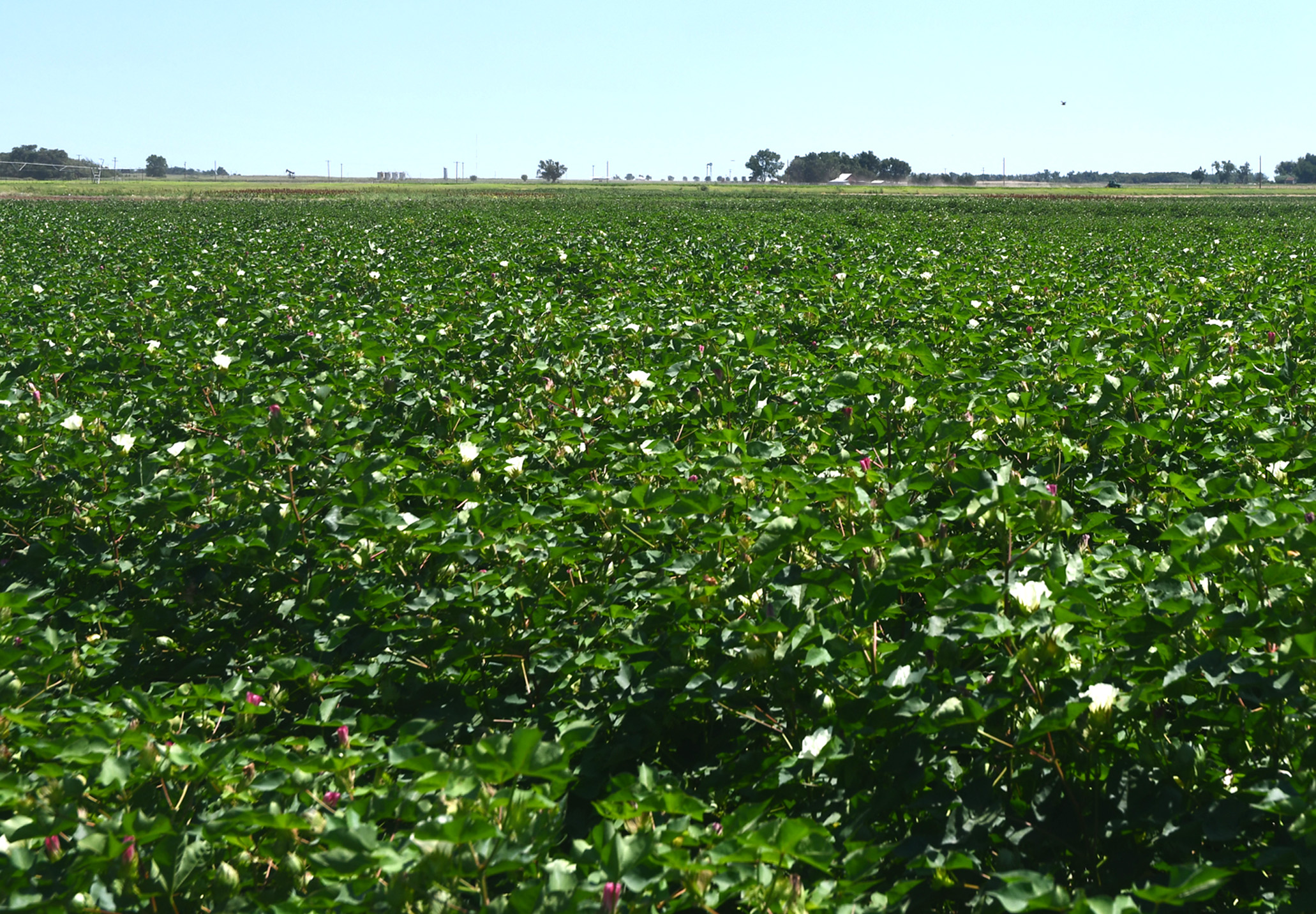Farm & Ranch
[AgriLife Today] Hold the water: Expert says wait until cotton flowering stage to irrigate

By: Kay Ledbetter
Writer: Kay Ledbetter, 806-677-5608, [email protected]
Contact: Dr. Paul DeLaune, 940-552-9941, [email protected]
CHILLICOTHE – Almost five years of data indicate producers can save as much as 40 percent of their water on a cotton crop by better timing their irrigation, according to a Texas A&M AgriLife Research scientist.
Dr. Paul DeLaune, an AgriLife Research environmental soil scientist at Vernon, has conducted long-term conservation tillage and irrigation studies at the AgriLife Research-Chillicothe station since 2008.
He discussed these studies during the Rolling Plains Summer Field Day Aug. 30 in Chillicothe.
The tillage treatments included four treatments: conventional tillage, strip tillage, no-till and no-till with a terminated wheat cover crop. In the last five years, DeLaune also began looking at irrigation timing and amounts to determine: “Should we start watering soon after planting, or should we wait until a critical growth stage?”
He said with the growing concern over declining water resources and availability and competing water users, it is critical to determine the best time to apply that water, especially in areas of a declining aquifer.
The study compared early season irrigation, starting with 0.2 inch per day applied beginning after planting when the stand is established and continuing on, to waiting until the crop reached a critical growing stage – in this case flowering. The two treatments tested after flowering were 0.2 inch per day after flowering and 0.25 inch per day after.
These all provided a nice range of low, medium and high irrigation regimes, he said.
“What we’ve found over the last five years is the early irrigation, the banking of water, is not paying off and is a waste of water resources that has not shown up in improved yields or increased soil water profile,” DeLaune said.
He said Jim Bordovsky, AgriLife Research senior research scientist and engineer, Lubbock/Halfway, has observed similar results at Halfway and has conducted more extensive research dealing with irrigation rates and timings.
“On a four-year average, the high irrigation treatment has resulted in 27 percent more water use compared to the medium treatment and 42 percent more water use compared to the low treatment,” he said. “Yet, we have observed no statistical differences in lint yields among irrigation treatments, with yields within 10 percent of each other among treatments.”
Additionally, he said, they have noticed more water is conserved, and fields have higher irrigation water-use efficiencies under no-tillage and no-till with a cover crop regime.
“Our yields over a four-year average have been statistically higher for those no-till systems than both strip tillage and conventional tillage, at least 9 percent higher,” DeLaune said.
“So combining conservation tillage with proper irrigation management and timing can conserve water resources and improve your yields and economic returns.”
-30-
Find more stories, photos, videos and audio at http://today.agrilife.org
Farm & Ranch
Ag Elsewhere: Wyoming

By Tressa Lawrence
Babies are tucked away in every nook and cranny. Many ranchers across Wyoming have baby animals popping up all over this time of year.
Farm & Ranch
Ag Elsewhere: Montana

By Lindsey Monk
Another load of grain in to keep feeding the calves until the green grass can really start popping.
Farm & Ranch
Meanwhile, Back at the Ranch….

By Rayford Pullen | [email protected]
Spring has sprung and hopefully the rains will continue where our country will heal from the previous droughts and our grasses will thrive. We are especially hopeful for the Panhandle of Texas where our neighbors and friends have been dealt a deadly blow to homes, ranges, livestock, and people. Keep them in your prayers as they will not be able to return to normal for many years if at all. Having lost their ability to benefit from this great cattle market is a double whammy for all of them.
Now is the time of year when we need to take care of business as it relates to our new calves that have been hitting the ground this spring. First and foremost is vaccinating for Blackleg followed by deworming with a white wormer and the IBR complex. Blackleg is a soil-born disease and with pastures extremely short this spring our calves have been grazing the green grass as soon as it shows itself, making them even more vulnerable to picking contaminates from the soil.
To read more, pick up a copy of the April issue of NTFR magazine. To subscribe by mail, call 940-872-5922.
-

 Country Lifestyles1 year ago
Country Lifestyles1 year agoScott & Stacey Schumacher: A Growth Mindset
-

 Equine7 months ago
Equine7 months agoThe Will to Win
-

 Country Lifestyles7 years ago
Country Lifestyles7 years agoStyle Your Profile – What your style cowboy hat says about you and new trends in 2017
-

 Country Lifestyles4 years ago
Country Lifestyles4 years agoAmber Crawford, Breakaway Roper
-

 HOME7 years ago
HOME7 years agoGrazing North Texas – Wilman Lovegrass
-

 Country Lifestyles7 years ago
Country Lifestyles7 years agoDecember 2016 Profile, Rusty Riddle – The Riddle Way
-

 Country Lifestyles8 years ago
Country Lifestyles8 years agoJune 2016 Profile – The man behind the mic: Bob Tallman
-

 Country Lifestyles8 years ago
Country Lifestyles8 years agoCowboy Culture with Clay Reid – Being a Man






